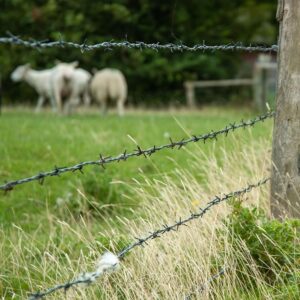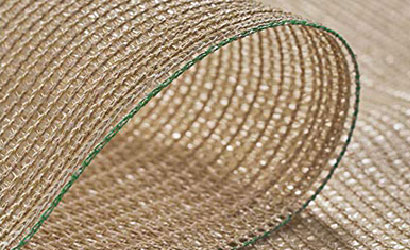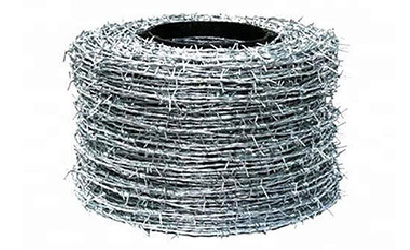Barbed wire is a type of steel fencing wire constructed with sharp edges or points (barbs) arranged at intervals. These barbs act as a physical and psychological deterrent, making it difficult for intruders or animals to cross.
Barbed wire is typically made from galvanized steel to prevent rust and enhance longevity. It’s often used in agricultural, industrial, military, and even residential settings.
Types of Barbed Wire
There are several types of barbed wire available, depending on your application:
1. Single Strand Barbed Wire
Features a single line wire with barbs.
Lightweight and easy to install.
Best for temporary fencing or low-security areas.
2. Double Strand (Twisted) Barbed Wire
Two wires twisted together with barbs between them.
Stronger and more secure.
Ideal for permanent fences, livestock control, and high-security zones.
3. PVC-Coated Barbed Wire
Coated in plastic for added weather resistance.
More visually appealing; available in multiple colors.
Common in urban or residential settings.
4. High-Tensile Barbed Wire
Made from high-carbon steel.
Stronger, more durable, and resists sagging.
Suitable for long-term installations in challenging climates.

Common Applications of Barbed Wire
Barbed wire is highly versatile and used in a wide range of industries:
🔒 Security Fencing
Used around military zones, prisons, warehouses, and construction sites to prevent unauthorized access.
🐄 Agricultural Fencing
Helps farmers contain cattle, sheep, and other livestock while keeping predators out.
🏡 Residential Use
Installed on walls or fences to enhance home security and act as a deterrent.
🛡 Border Control & Military Use
Used by defense forces and border patrols for territory control and obstacle creation.
Barbed wire is a time-tested fencing solution that offers high security at a low cost. Whether you’re safeguarding your farm, protecting industrial property, or adding a security layer to your home, barbed wire is a reliable and efficient choice.









